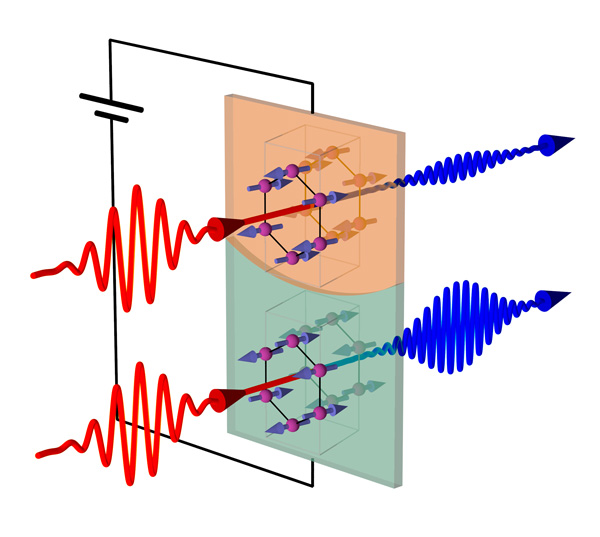
Figure 1: Light waves (red arrows) passing through a crystal can reveal magnetic domains in certain 2D antiferromagnets. © 2025 RIKEN Center for Emergent Matter Science
A new trick for illuminating the internal ordering within a special type of magnet could help engineers build better memory-storage devices1. Developed by RIKEN physicists, this technique could make memory devices less corruptible.
Conventional hard disks are based on ferromagnets-materials in which the magnetic dipoles, or spins, associated with each atom all point in the same direction. This alignment gives the material a net magnetic field. Data is stored by creating different magnetization patterns across the material.
But physicists are looking to improve device performance by using antiferromagnets instead of ferromagnets. In antiferromagnets, neighboring spins are aligned in opposite directions. This configuration ensures that the material has no net magnetic field since the opposing spins cancel each other out.
"In principle, antiferromagnetic memories should be much faster, smaller and more robust against errors than ferromagnetic ones," says Naoki Ogawa of the RIKEN Center for Emergent Matter Science (CEMS).
Ideally for applications, the antiferromagnet's spins should be ordered regularly, in an antiparallel fashion, across the whole material. However, "this doesn't happen in antiferromagnetic crystals naturally," notes Ogawa.
Instead, the material is split into magnetic domains-within each domain, adjacent spins are antiparallel, but in neighboring domains the alternation pattern is reversed.
The trouble is that before physicists can manipulate the domains to correct their orientations, they need to be able to find them, and that's not easy. "You can't just look and see them," says Ogawa. "You need a way to visualize them."
One strategy for identifying domains involves shining a light across the material in one direction and then again in the opposite way. Magnetic domains can be determined by examining the different ways in which the light's frequency is affected by the symmetry of the atoms and spins.
"The material responds differently when you reverse the direction of the light, allowing you to determine its structure," explains Ziqian Wang, also of CEMS.
This effect is tough to pick out. But in a proof-of-principle study, Wang, Ogawa and colleagues have found a way in a two-dimensional crystal containing manganese, phosphorus and sulfur (Fig. 1).
They applied an electric field as an added source of interference, which enhanced the visibility of the domains by up to 90%. Previous attempts used a combination of magnetic and electric fields, notes Wang, but that required bulkier instruments and was much slower.
"Now we can visualize the domains, our next step is to develop an ultrafast technique to locally manipulate them," says Wang.






